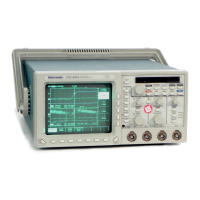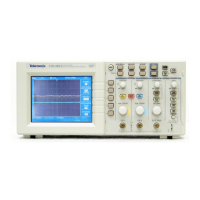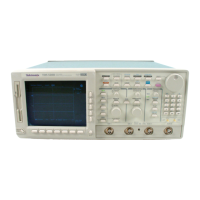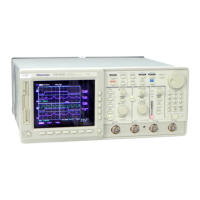TDS 420A, TDS 430A, TDS 460A & TDS 510A User Manual
1–3
Start Up
Before you use the digitizing oscilloscope, ensure that it is properly installed and
powered on.
Operation
To properly install and power on the digitizing oscilloscope, do the
following steps:
1. Be sure you have the appropriate operating environment. Specifications for
temperature, relative humidity, altitude, vibrations, and emissions are
included in performance verification and specification manuals (Tektronix
part numbers 070-9705-xx and 070-9706-xx).
2. Leave space for cooling. Do this by verifying that the air intake and exhaust
holes on the sides of the cabinet (where the fan operates) are free of any
airflow obstructions. Leave at least 2 inches (5.1 cm) free on each side.
WARNING. To avoid electrical shock, be sure that the power cord is disconnected
before checking the fuse.
3. Check the fuse to be sure it is the proper type and rating (see Figure 1–1 for
the fuse location). You can use either of two fuses (see Table 1–1 for the
fuse data).
4. Check that you have the proper electrical connections. TDS 400A digitizing
oscilloscopes require 90 to 132 V for 48 through 62 Hz, 100 to 132 V or 180
to 250 V for 48 through 440 Hz, and may require up to 240 W. The
TDS 510A requires 90 to 250 V for 45 Hz to 440 Hz, and may require up to
300 W.
5. Connect the proper power cord from the rear-panel power connector (see
Figure 1–1 for the connector location) to the power system.
Installation

